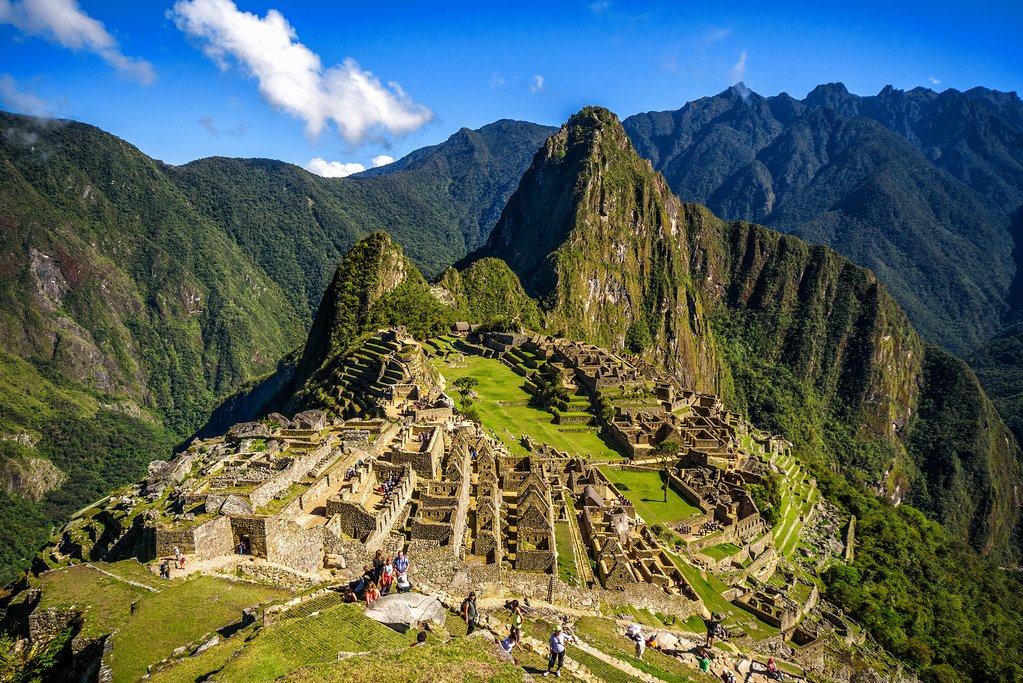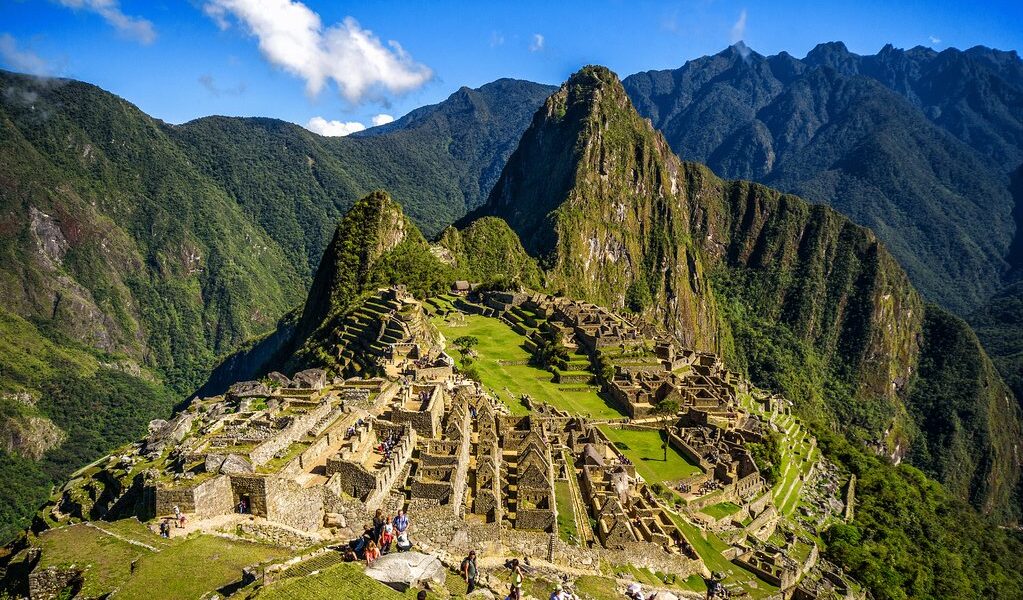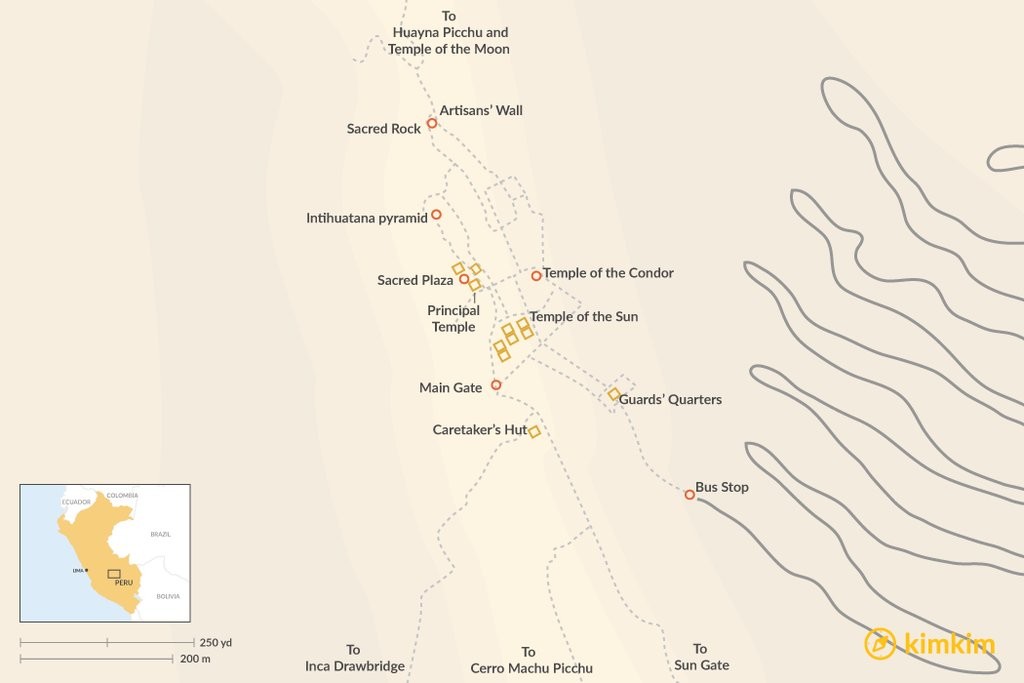
The spellbinding scenery and perfect stonework of the Lost City of the Incas have fascinated historians, architects and tourists alike since the ruins were uncovered from the jungle over a century ago. To make the most of this unforgettable place, use our expert guide to Machu Picchu to plan your trip.
## Discovering the Majestic Machu Picchu: A Comprehensive Guide
The allure of **Machu Picchu** is undeniable, a siren call to adventurers and history buffs alike. This ancient citadel, nestled high in the Andes Mountains of Peru, stands as a testament to the ingenuity and artistry of the Inca civilization. For many, a journey to **Machu Picchu** represents the pinnacle of their South American travels, an experience that etches itself into memory long after the return home. A significant part of the enchantment stems from the very mystery that shrouds the site. The rediscovery of these remarkable ruins in 1911 by Hiram Bingham, a then young and ambitious archaeologist from Yale University, ignited the imaginations of the world. It’s a discovery that many believe served as inspiration for the iconic fictional character, Indiana Jones.
While historians have dedicated countless hours to deciphering the true purpose of **Machu Picchu**, the definitive answer remains elusive. The most widely accepted theory suggests that construction began around the mid-15th century, during the reign of the powerful Inca ruler, **Pachacútec**. It is believed that **Machu Picchu** functioned as a lavish royal retreat, a sanctuary from the harsher winter climate of **Cusco**. The strategic choice of location offered respite and perhaps also a degree of seclusion. The absence of any significant military infrastructure lends credence to the idea that **Machu Picchu** was not intended as a fortress or defensive stronghold. This lack of apparent strategic value may be precisely why the site was spared the destructive attention of the Spanish conquistadors, allowing it to remain hidden and remarkably well-preserved for centuries.
The breathtaking panorama of **Machu Picchu** is a photographer’s dream. The intricate Inca stonework, blending seamlessly with the rugged landscape, presents an irresistible subject. Towering above the site is the iconic, horn-shaped, forested peak of **Huayna Picchu**, further enhancing the visual splendor. The sheer magnificence of the setting makes it virtually impossible to capture a “bad” photograph. Given the extraordinary beauty and historical significance of **Machu Picchu**, a quick, rushed day trip from **Cusco** simply doesn’t do it justice. To truly appreciate the wonder of the site, it’s essential to allocate sufficient time for exploration and reflection.
## Strategizing Your Visit
Planning a trip to **Machu Picchu** requires careful consideration, particularly in light of the site’s ever-increasing popularity. The desire for those serene moments of connection with the ancient world can be somewhat challenging to achieve, given the substantial number of visitors that the site attracts daily. During peak season, which typically falls during the summer months, **Machu Picchu** welcomes as many as 5,000 visitors each day. If witnessing the sunrise over the ruins is a priority, be prepared to encounter long queues, particularly before dawn. Similarly, the period around midday, when day-trippers arrive from **Cusco**, sees a surge in visitor numbers. As the afternoon progresses and the day-trippers begin their departure, a sense of tranquility gradually descends upon the site, offering a more intimate and contemplative experience.
The least rewarding approach to visiting **Machu Picchu** involves a lengthy and tiring day trip originating from **Cusco**. Spending a disproportionate amount of time in transit and enduring long waits detracts significantly from the overall experience. A more sensible strategy is to acclimatize to the altitude gradually upon arrival in **Cusco** (which sits at a considerable 3,300 meters above sea level). Spending a few days exploring the lower altitude of the Sacred Valley before venturing to **Machu Picchu** can mitigate the risk of altitude sickness, especially if you have traveled by plane. Consider spending a night in either **Ollantaytambo** or **Aguas Calientes**. Taking the early morning train from **Ollantaytambo** allows you to reach **Machu Picchu** refreshed and ready for exploration. Alternatively, staying in **Aguas Calientes**, the town closest to the site, provides convenient access. It is also advisable to stay in one of these towns following your visit, rather than undertaking a rushed journey back to **Cusco** on the same day.
### Optimal Timing
The peak tourist season at **Machu Picchu** extends from late June through the end of August. This period coincides with the driest and sunniest weather, which also aligns with school vacations in many parts of the world. The rainy season, in contrast, typically peaks between January and March. However, it’s important to note that the region can experience intermittent rain and mist at any time of year. The most favorable periods for visiting often fall between late April and mid-June, as well as during September and October. These months offer a balance of pleasant weather, avoiding both the heavy rains and the summer crowds. Despite its altitude of 2,400 meters, the subtropical climate generally ensures comfortable conditions.
The length of time spent waiting in line to enter the site can vary considerably. During the early morning hours, around 6 am, the site tends to be particularly busy as visitors rush to witness the sunrise. However, the crowds often thin out somewhat an hour or two later. Lines typically peak again between 11 am and noon, coinciding with the arrival of day-trippers from **Cusco**, before gradually diminishing by around 2 pm.
### Updated Guidelines
Recognizing the need to protect **Machu Picchu** from the adverse effects of its own popularity, new regulations have been implemented. A key change involves dividing entrance tickets into two time slots: morning (6 am to midday) and afternoon (midday to 5:30 pm). Visitors who wish to remain at the site for the entire day are now required to purchase two separate entrance tickets.
Another significant regulation mandates that all visitors must now enter **Machu Picchu** accompanied by a licensed guide. This requirement is, in fact, a positive development, as knowledgeable guides can breathe life into the ruins with compelling stories and historical insights. The guided tour typically lasts for over two hours, following a pre-determined route, after which visitors are free to explore the site at their own pace. If you plan to climb **Huayna Picchu** or **Machu Picchu** mountain after the guided tour, it’s essential to book your tickets well in advance.
## Must-See Sites Within Machu Picchu
### Key Areas of Machu Picchu
The journey into **Machu Picchu** typically begins on the south side, passing through the **Guards’ Quarters**. From there, your guide will lead you to the **Caretaker’s Hut** and the **Terrace of the Ceremonial Rock**, one of the highest vantage points on the site, offering panoramic views. Beneath the lookout point lie over 100 agricultural terraces, which were essential for crop cultivation in Inca times, providing a year-round food supply.
Continuing downhill, you’ll pass through the **Main Gate**, a colossal entranceway, before reaching the **Royal Tomb** and the circular walls of the **Temple of the Sun**. The **Temple of the Sun** is notable for its windows, which are perfectly aligned to capture the solstices. Next, you’ll arrive at the **Sacred Plaza**, surrounded by temples on three sides. The **Principal Temple** is particularly impressive, constructed with enormous horizontal stones.
To the west, ascend the staircase to the **Intihuatana pyramid**, the highest point in the urban sector of **Machu Picchu**. The pyramid’s centerpiece is an unusual sculpture, considered the most sacred object in the entire site. Further along, you’ll encounter the 25-foot-long **Sacred Rock** and the **Artisans’ Wall**, arguably the finest example of stonework on the site. The tour concludes at the **Temple of the Condor**, where a sculpted rock depicts the condor, a bird that remains revered by the Andean people.
### Nearby Walks and Hikes
Several remarkable walks and hikes can be undertaken around **Machu Picchu**. The shortest and easiest of these leads to the **Inca Drawbridge**, located to the right as you ascend towards the **Caretaker’s Hut**. A slightly longer hike, requiring approximately one hour round-trip, will take you to the **Sun Gate**. At an elevation of 2,720 meters, the **Sun Gate** is the highest vantage point from which to view the ruins, and it serves as the entry point for trekkers arriving via the Inca Trail. Beyond this lies a 3-hour hike to the summit of **Cerro Machu Picchu** (the name translates to “big mountain”).
### The Ascent of Huayna Picchu
By far the most iconic hike is the climb to the summit of **Huayna Picchu**, the dramatic, forested mountain that dominates the skyline above the ruins. This somewhat challenging hike is only permitted in the morning. It is a highly popular activity, requiring nearly two hours to complete. As with **Cerro Machu Picchu**, advance booking is essential, and hikers are allotted extra time beyond the designated morning slot. An additional hour should be factored in for a visit to the nearby **Temple of the Moon**, a remarkable structure nestled beneath a massive overhanging rock.
## Trails Leading to Machu Picchu
To truly immerse yourself in Peru’s rich Inca heritage, consider embarking on one of the Inca Trails. The Classic 5-Day Inca Trail, typically completed over four days, with an additional day spent at **Machu Picchu**, passes over 30 Inca sites. For those with less time, a shortened 2-day version captures the most impressive ruins. Due to the trail’s popularity and limited capacity, alternative trekking routes are becoming increasingly favored. The Salkantay Trek, a 5-day adventure through spectacular mountain scenery, provides a challenging and rewarding experience. Alternatively, the 4-day Inca Jungle Trek, situated at a more comfortable altitude, offers lush scenery with fewer Inca ruins.
## Reaching Machu Picchu
The most immersive way to reach **Machu Picchu** is by hiking, with options for 2-day or 4-day treks. This echoes the experience of early explorers, providing a profound connection with the landscape. The classic Inca Trail culminates directly at the Sun Gate, eliminating the need for a bus ride.
If time constraints preclude a trek, the next best option is to travel by train. Two companies, Inca Rail and Peru Rail, operate trains to **Aguas Calientes**, the town closest to the site. Booking in advance is strongly recommended, especially during the peak season, and particularly if you are traveling from **Cusco**. Peru Rail offers enhanced seating and refreshments on its Vistadome service, and unparalleled luxury on the premium Hiram Bingham service. However, the standard Expedition service remains a comfortable option. Inca Rail offers both first class and standard executive class options.
While schedules are subject to change, the first train typically departs from **Cusco** at 6:40 am, arriving in **Aguas Calientes** at 9:54 am. Traveling from nearby **Ollantaytambo** (a 1.5-hour journey) to **Aguas Calientes** is often preferable. The first train from **Ollantaytambo** departs at 5:05 am, arriving at 6:35 am. Regular return services operate from **Aguas Calientes** in the afternoon and evening, though only a limited number of trains travel directly to **Cusco**. Staying overnight in **Aguas Calientes** before visiting **Machu Picchu** is highly recommended. From there, a 30-minute bus ride will take you up to the entrance of **Machu Picchu**.
## Accommodation and Dining
The most luxurious and conveniently located accommodation is the Belmond Sanctuary Lodge, situated right next to the ruins. In **Aguas Calientes**, the Inkaterra Machu Picchu Pueblo Hotel stands out with its lush cloud forest setting. However, numerous other hotels cater to a range of budgets, including Gringo Bill’s, a popular mid-range option. In **Ollantaytambo**, El Albergue, an American-run hotel and restaurant, is a well-known and charming choice.
A café is conveniently located just outside the entrance to the ruins for refreshments. Dining options are plentiful in **Aguas Calientes**, with recommended restaurants including the eco-friendly Tree House, which specializes in Peruvian and Asian fusion dishes, and Indio Feliz, known for its expertly crafted blend of French and local cuisine.
## Expert Advice
* Water is not available inside the site, so bring an adequate supply. Overpriced water bottles are sold just outside the entrance. Consume food before entering, as it is prohibited within the site.
* Weather conditions can change rapidly, so be prepared for both sun and rain. Pack sunscreen, a hat, rain gear, sturdy walking shoes, and mosquito repellent. A small umbrella can also be useful.
* Only small luggage is allowed on the train, so pack essential items and store larger suitcases at your hotel in **Ollantaytambo** or **Cusco**.
* Be aware that some less scrupulous restaurants may add a 20% “special tax” to your bill. Inquire about this potential charge before ordering.
* A unique souvenir is the **Machu Picchu** stamp for your passport, available upon exiting the site. Remember to ask for it!


